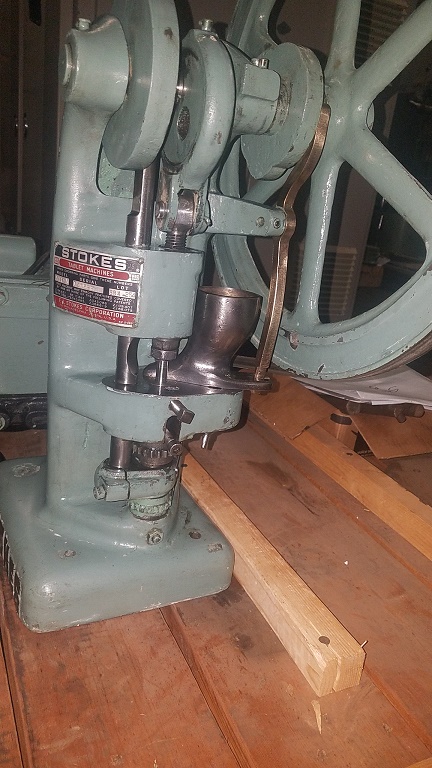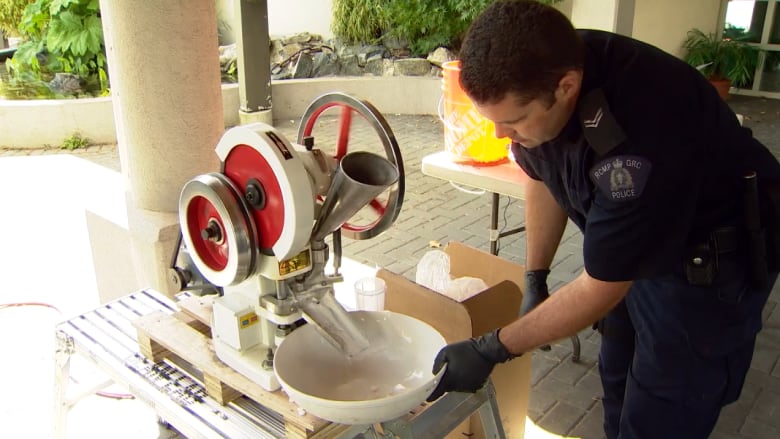The pill press is a machine used to manufacture tablets and capsules, commonly known as pills. It takes powders or granules and compresses them into the desired shape. The process involves two parts: tablet binder and pressing. Here we will explain how each step of this process creates pills.
Tablet Binder
Tablet binding is the process of adding a substance called a binder to hold the powder particles together in order to form tablets or capsules. The type of binders used varies depending on the application but they can include gum arabic, carboxymethyl cellulose, micronized waxes, natural gums, polyvinylpyrrolidone (PVP), starch derivatives and various combinations of these ingredients. Different binders impart different properties such as hardness, disintegration time and other characteristics important for tablet performance. Once the powder has been mixed with the appropriate binder, it is ready for compression by the pill press machine.

Compression phase
In this part of the manufacturing process, compressed air forces powder through die cavities engraved with embossed logos or symbols, such as pharmaceutical company trademarks and dosage amounts in milligrams (mg). The embossed area must be precisely designed to not exceed its elastic limits when compressed. This ensures that punched tablets do not break during loading and ejection operations in later stages of production. As the pressure increases during compression, so does the friction between the tablet surfaces, which helps to hold the particles tightly together while maintaining a uniform thickness on all sides of the tablet surface. Upon completion of the compression phase and removal from the die cavity, the tablets are ejected onto collection trays where they cool before being packaged for distribution or sale.
Pre-blending of sub-ingredients
In some cases, sub-ingredients may need to be pre-mixed before being fed into the tablet press to ensure uniform distribution throughout the batch, particularly where high concentrations are required in specific areas such as the outer edges or centre of the tablet. In addition, some capsule formulations require special mixers to ensure homogeneity between powders before entering the main mixing bowls for further processing steps, to enable more uniform distribution along the entire cavity length after final product ejection.
Filling & encapsulation processes
For additional pill pressing operations, such as filling powders into hard gelatin capsules or soft gels, manufacturers use mechanical feeding systems that draw the appropriate amount from material hoppers to set dosage volumes, then insert them into one of the open ends before manually closing the other end using specialised tools. During the encapsulation process, machines apply thin layers of coating to already filled encapsulated products, creating hermetically sealed surfaces that provide optimal protection against external contaminants while maintaining excellent moisture resistance levels over extended periods of time.
Die compaction & tablet ejection
Compacted cores pass through multi-cavity dies, which are placed on a rotating system below the top plate, where an additional layer is applied to cover the core surface, forming a smooth finished product, before passing under the bottom plate in a one-way direction only, where pneumatic cylinders push the tablets outwards at a controlled rate, without damaging their desired shapes in any way. Once the tablets have completed their entire journey, they are safely and programmatically removed from the dies, enabling mass production cycles that can do this within specified timeframes, accurately every time.

Conclusion
The pill press is an essential tool in many industries as it enables fast production speeds whilst maintaining accurate dosage requirements thanks to its precise design capabilities allowing manufacturers to produce consistent quality results throughout their production runs on demand, cost-effectively and with minimal effort overall making it a truly invaluable piece of equipment well worth both time and money invested in today’s modern world!



